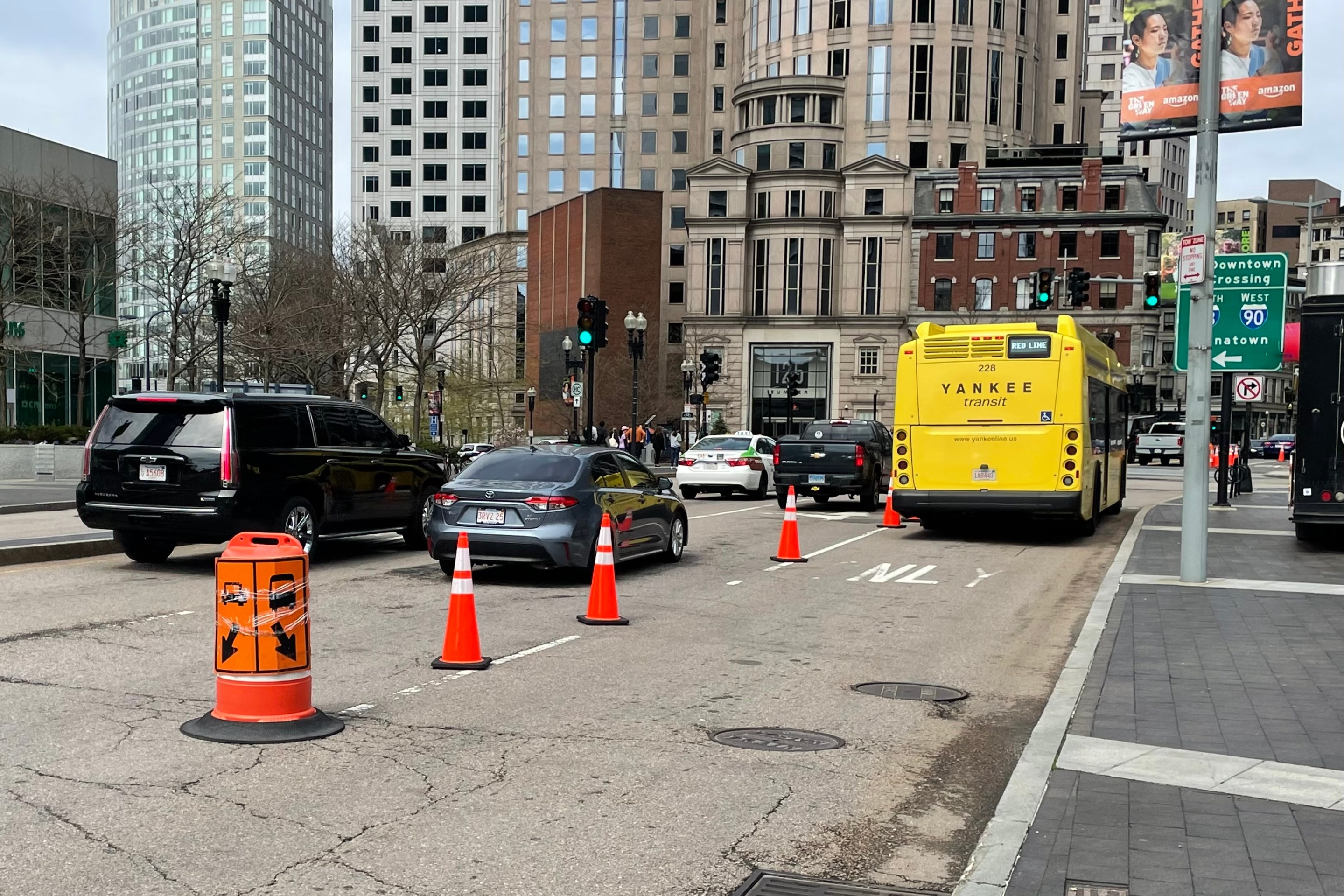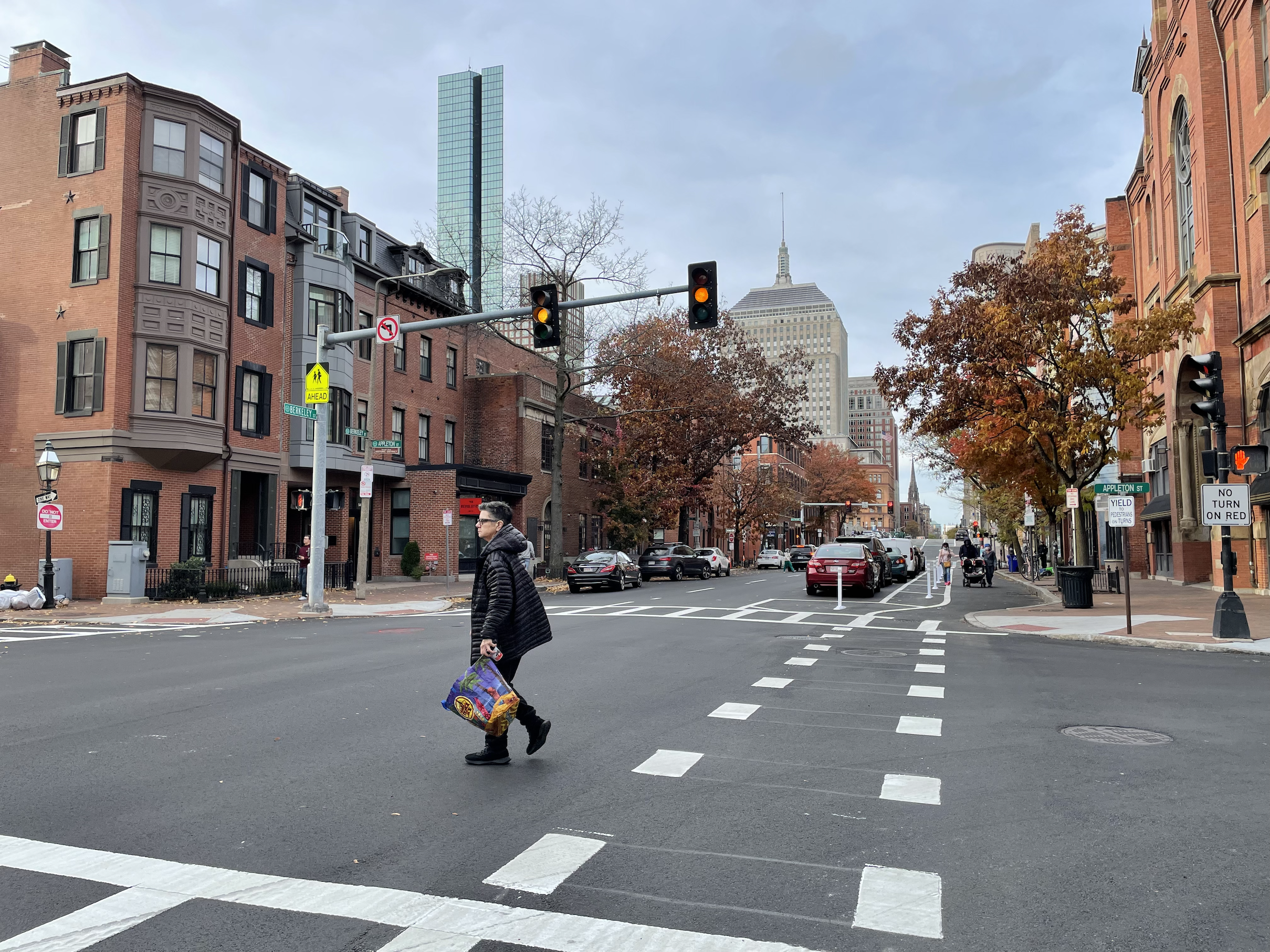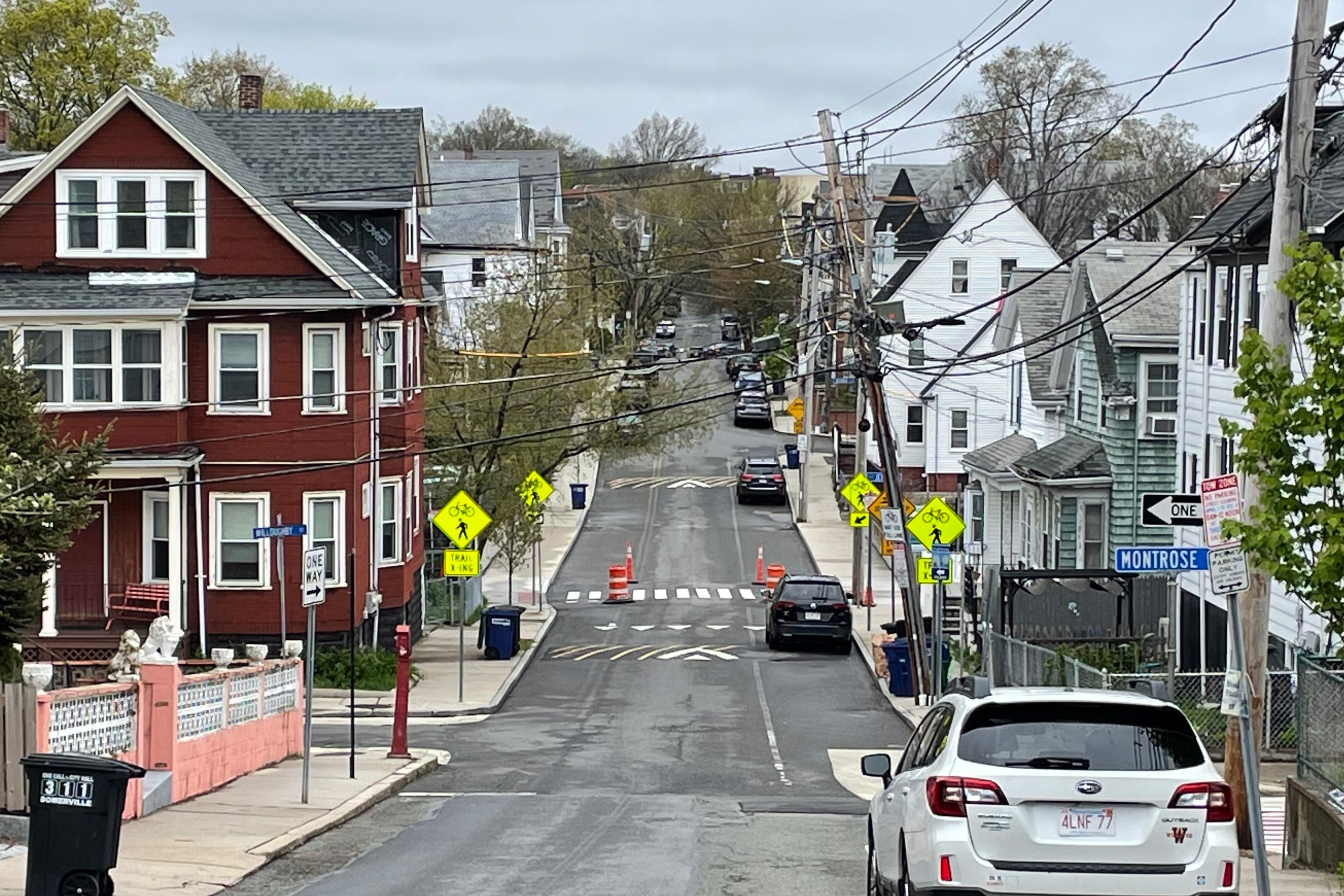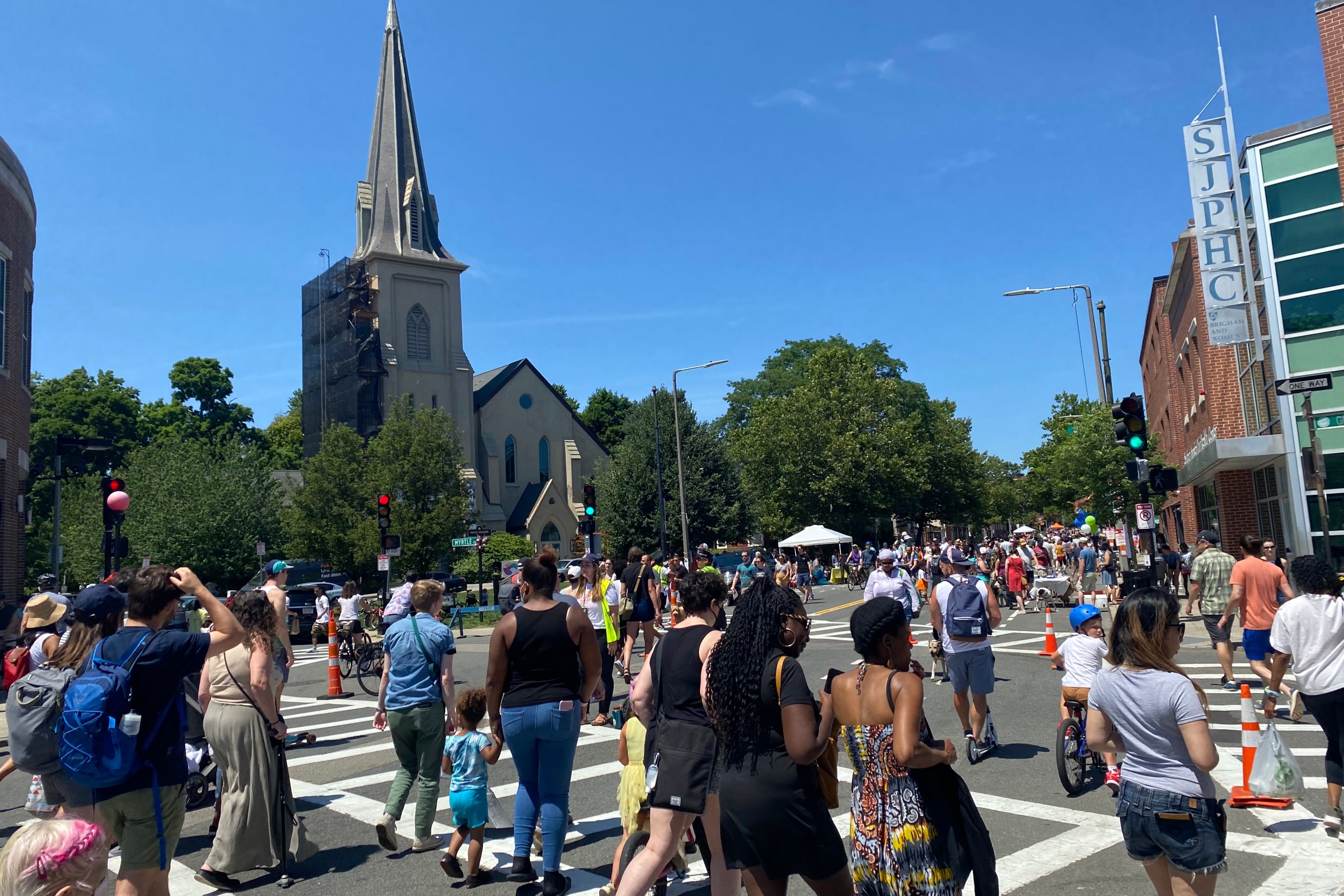Boston’s Exciting Biking Transformation: How the City is Promoting Biking on Multiple Fronts
11:06 AM EDT on September 14, 2022
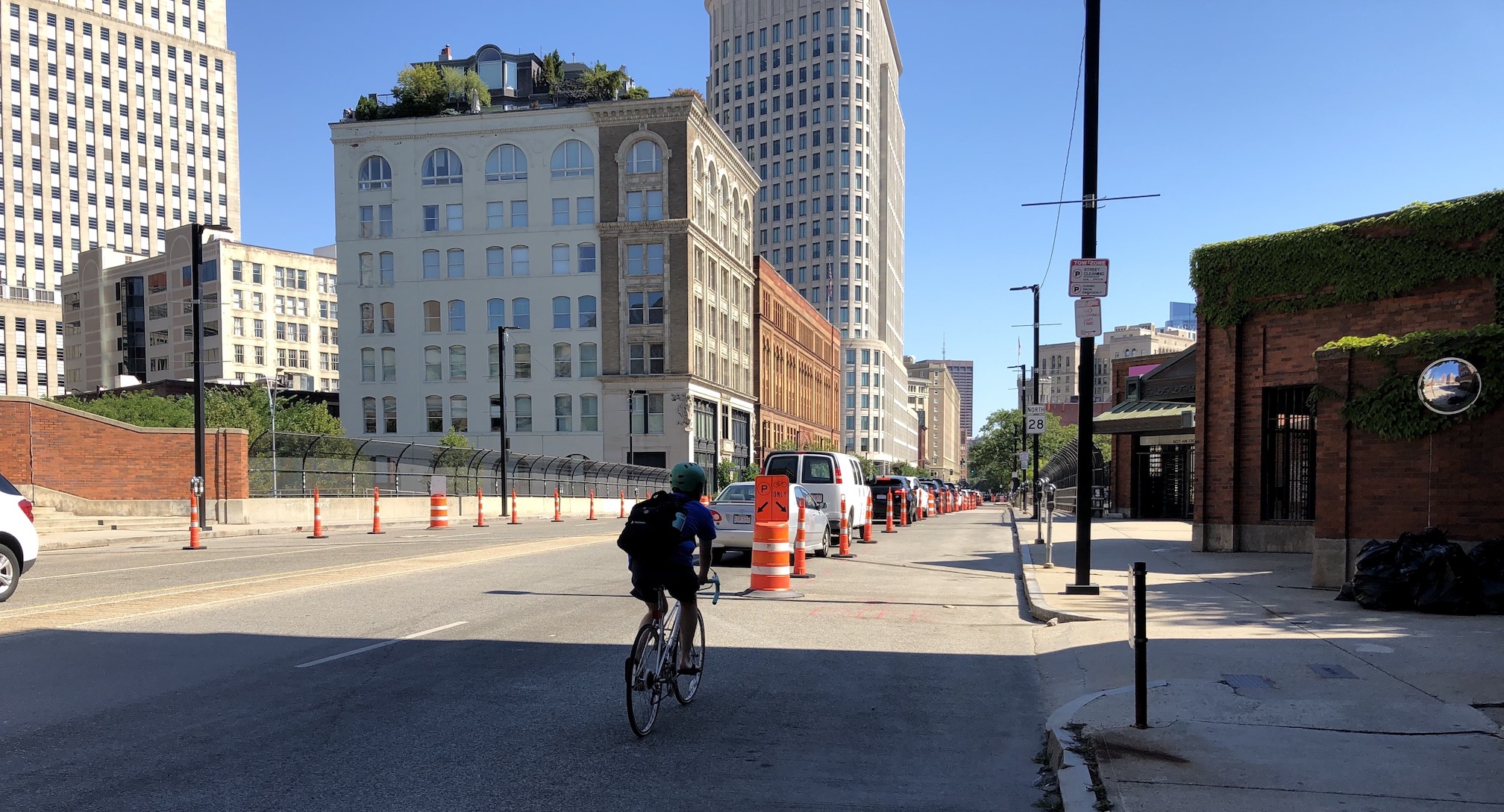
A pop-up protected bike lane has been reinstalled on Columbus Avenue in Back Bay, between Clarendon Street and Church Street. A similar pop-up protected bike lane on this segment of Columbus Avenue had been in place in 2020 and 2021, when it was part of Boston’s “Healthy Streets” pandemic response.
Boston’s public transportation system has been plagued by incident after incident in the last few months; from the Orange Line shutdown last month, to sparks on the Green Line filling up Park Street station with smoke this past weekend.
But while the subway system languishes, the City of Boston is taking the opportunity to invest and promote biking as a viable alternative to get around the region.
Last week, Mayor Wu made a major announcement about the city’s plans to expand its network of protected bike lanes. But the city isn’t just focusing on new infrastructure: it’s also hosting educational programs, expanding the Bluebikes system, and rolling out new subsidies for e-bike purchases.
The Bluebikes boom
Last month, the City of Boston announced free 30-day Bluebikes passes to give more people easier access to the bikeshare service during the Orange Line shutdown.
On the first weekend the free pass became available, Bluebikes broke their weekend ridership record. And they’ve been breaking records ever since:
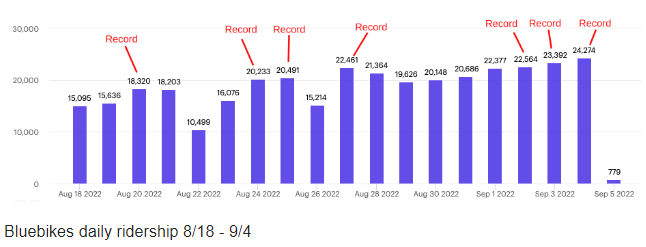
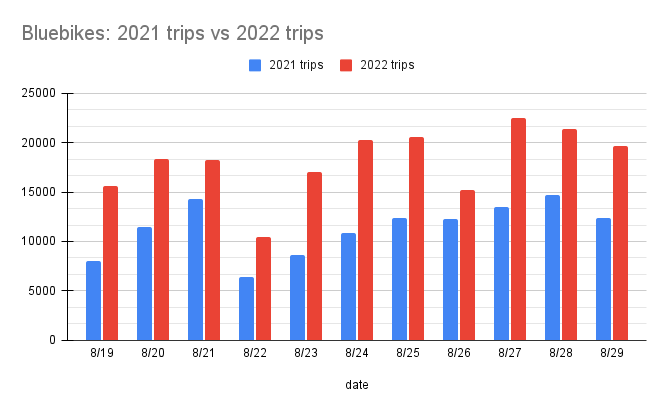
Further decreasing the barrier to entry for biking, the City announced a $1.5 million electric bike rebate program for seniors and people with disabilities at a press conference held last week at the Tobin Community Center in Roxbury.
Helping new riders
Not only has the City put on several Learn-to-Ride workshops for women and gender-diverse adults in the last few years, but they’ve now set a concrete goal and committed to “help 600 women gain confidence in bikes” over the next three years.
At these free summer workshops, folks get a chance to learn and practice basic skills such as hand signaling and using gears with the help and encouragement of city staff and volunteers.
A helpful feature of the program for anyone who is wishing to commute by bike is the on-street skills workshop, where folks ride through Boston’s streets together and get a better sense of what to expect when they're on their own.
Leading by example is Mayor Wu who has begun biking to work in the recent weeks. She publicly shares the same safety concerns as others who bike in the city and she invites anyone from the community to join her as she rides from her neighborhood in Roslindale to City Hall in downtown Boston.
Local nonprofits have also contributed to the ongoing efforts. During the Orange Line shutdown, the Boston Cyclists Union organized daily bike convoys led by a number of volunteers throughout Boston and neighboring cities. Additionally, the group posted physical wayfinding signs along the different bike routes to help guide new riders.
Infrastructure
Safe, comfortable and accessible bike infrastructure is key for making city biking a positive experience. In preparation for the Orange Line shutdown, the City brought out the cones it used for pop-up lanes during the pandemic and deployed them onto various streets near the Orange Line including Columbus Avenue in Back Bay.
Since then, the city has put up several other temporary protected bike lanes to give riders a safe connection between the popular Southwest Corridor bikeway and the downtown bike network:
The Boylston St popup #bikelane was installed today by @BostonBTD. It provides a safe link between the Southwest Corridor and the downtown bike network through Back Bay. pic.twitter.com/0ZEZWuBWln
— Jascha Franklin-Hodge (@jfh) September 2, 2022
Permanent bike lanes are coming soon too. At a press conference last week, the City announced targeted goals for “transforming Boston’s streets to better serve people walking, rolling, and riding bikes.”
In the next three years, the City plans to dramatically expand its bike network, with the goal of giving 50% of residents access to a safe and connected bike route within a 3-minute walk.
In its first step towards meeting that goal, the City is prioritizing bike lanes that will fill key missing links in the network and add the most connections. Together these new lanes will grow the bike network by 9.4 miles by the end of 2023.
Those new projects will be in addition to several others that are already in the midst of planning studies already in progress, like a proposal to add protected bike lanes and center-running bus lanes to Blue Hill Avenue in Mattapan and Dorchester, and the expansion of permanent bike lanes along Columbus Avenue in the South End.

Expanding service
Last month, Franklin-Hodge shared more Bluebikes were coming to Boston to increase system capacity. According to the Press Office of Mayor Michelle Wu, the 500 bikes were ordered a few months ago and “they will be added to the general fleet to improve rideability across the region.”
The City also plans to increase the network's capacity by adding more than 100 new Bluebike stations, increasing service by 40%.
As Boston’s bike network, educational programs and service quality become more robust day by day and over the next three years, we could see more people not only try biking in the city for the first time using a free Bluebikes pass, but potentially keep biking well after the Orange Line service returns.
Stay in touch
Sign up for our free newsletter
